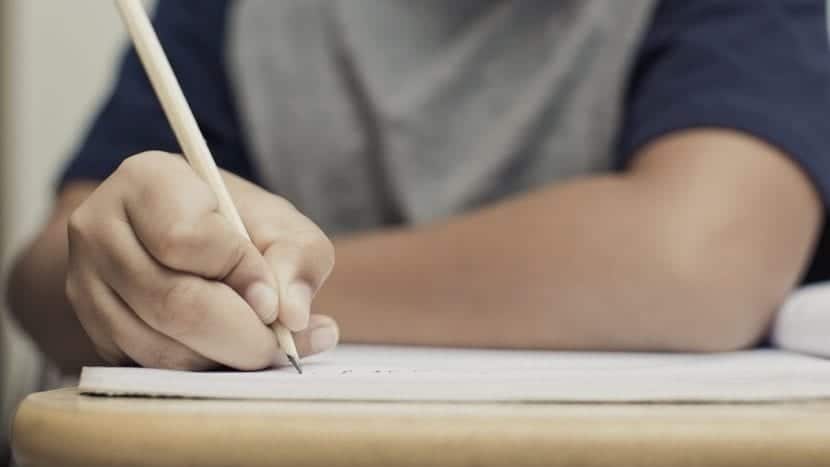
An evaluation is necessary in the world of education, learning and in any environment in which a person, of any age must undergo tests or examinations to find out what their level of knowledge is. When we speak of diagnostic evaluation, we will be referring to the type of evaluation through tests or tests that a professional performs on a person of any age to know the score obtained in different areas.
These areas can be math, language, or emotional or mental level. Ultimately, the evaluation is a compilation of information necessary for the educational or psychological professional to take the decisions they need to improve their learning or their emotional or mental state.
Diagnostic evaluation
The diagnostic evaluation is a systematic and rigorous process that is carried out in the school during the beginning of the school year, during the beginning of a subject of study or an academic stage. Even the educational center is the one that can assess what time is the best to give its students a diagnostic evaluation.

Every diagnostic evaluation has certain objectives:
- Understand what state students are in
- Know what they know about a topic
- Make decisions that make your life easier
- Improve learning during the development of the educational process
In short, it addresses the information necessary for professionals to know how to correctly guide students so that in this way, they have better results in their studies and therefore, that they are able to achieve success in their own objectives. This type of evaluation takes into account three fundamental aspects: lor who knows, what motivates and the student's learning conditions.
What must be considered
In order to carry out a diagnostic test on a student or group of students, some fundamental criteria must be taken into account. They are criteria that can be considered as the basis for obtaining good results.
What do the students know
Understand what students know before making decisions about the goal being addressed. The knowledge, ideas and skills they have are the basis for creating new content. It should not be forgotten that all learning must make sense, so what is known must be linked with what is new to be learned. Evaluating this aspect involves asking yourself questions and making decisions. To make decisions, you must take into account:
- The type of skills, knowledge, and prior ideas each student has
- How what you already know relates to what is new you don't know
- The order of contents
- The method for them to learn it
- If the previous knowledge is wrong or not and that the students become aware of it
- Correct previous knowledge that is wrong
- Know how much knowledge or skills they have and how much they lack (review, guides, diagrams, modifications of the syllabus, etc.)
- They may learn new content or lack tools or reinforcement to achieve it

Know the tastes of each student
Each student has their own preferences, interests, and they like to make their own decisions based on the information they have in mind. If teachers know what their students' tastes are, they will be able to guide teaching towards a motivation that will allow students not only to pay more attention, but also to better internalize the learning they should have. It will be a much easier learning for them. The following should be taken into account:
- Tastes, preferences and interests of each student
- Relate the new content with the interests and preferences of the students
- Carry out possible learning projects related to these interests
- Create groups of students with common interests
- Know what content is most relevant
Know the styles and rhythms of learning
Each student will have their own learning style and pace for each student and will make decisions regarding how to study. Teachers must always take into account the learning pace of their students so that the day-to-day in the classroom is fair for all students equally. In this sense, you should keep in mind a great diversity of rhythms in learning so that those who are more advanced maintain their motivation to advance and those who are further behind do not get frustrated and also maintain that motivation to continue learning.
Knowing how students learn is the only way to teach them in the most appropriate way. Recognizing the rhythm of learning serves to ask each one of them the best they can give. To do this, you must take into account:
- How each student learns best
- What materials are best suited to teach them
- Combine teaching methods (oral, textual, graphic, manipulative, etc.)
- Propose different types of activities for everyone
- Offer different forms of evaluation if necessary
- Think of the most appropriate strategies to develop the student
- Take into account the speed of learning of students
- Know which students need to spend more time and which ones can be left more autonomous
A diagnostic evaluation is not done overnight, it is a process that takes time. First, the appropriate strategies and tools must be developed to be able to record the information that will later be useful in the teaching-learning process.

Afterwards, the most appropriate decisions will have to be made and later converted into actions. You must know where to start, being aware of the need of the class group and of the students in particular. This is important to later know what type of teaching should be taken into account to teach new content.
In short, the diagnostic evaluation serves to know how students are, what exactly they need to enhance their learning and above all, it gives teachers very useful information that will help them to better plan their classes. It is undoubtedly a necessary tool that must be carried out periodically to know what decisions would be the most appropriate to take and that in this way the students were able to take the correct path towards their own learning.